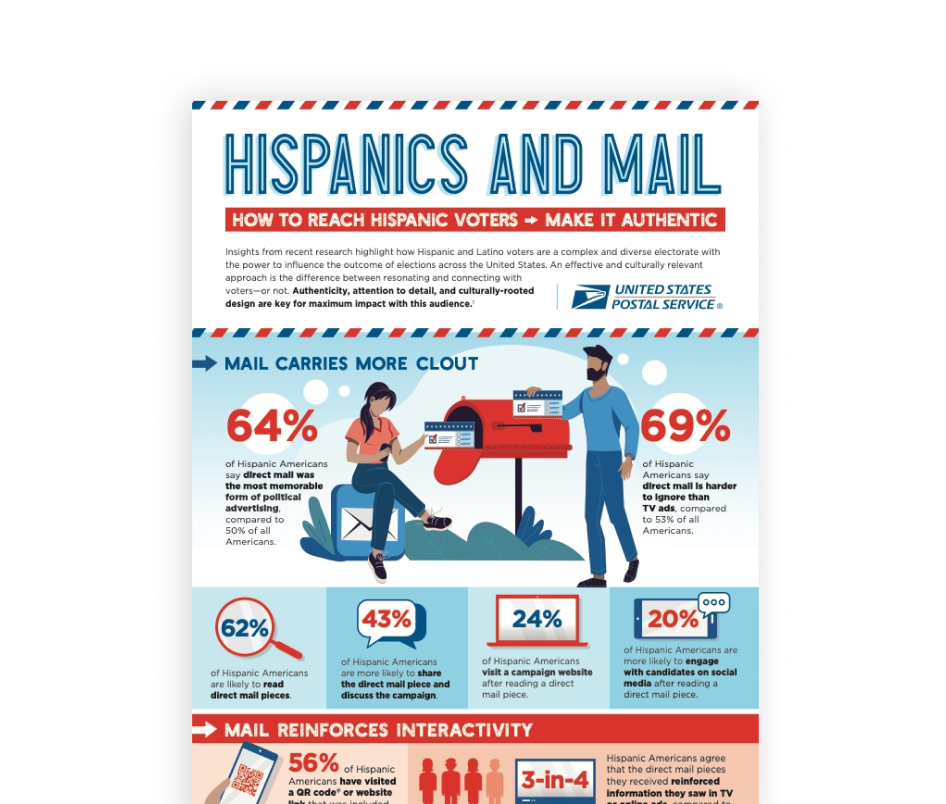1. Nathan L. Gonzales, “Midterm Elections Could Set Another Turnout Record This Year,” Inside Elections, October 12, 2022.
2. “2022 Voting and Registration Data Now Available,” United States Census Bureau, Updated May 2, 2023.
3. “USPS Political Mail Post Election Research Analysis Report,” USPS, January 13, 2023.
4. “The State of Direct Mail Report,” Lob, 2023.
5. Taylor Orth, “What reasons do Americans give for not voting in 2022?,” YouGov, November 16, 2022.
6. Spring 2022 Global Attitudes Survey, Pew Research Center, 2022.
7. “Informed Delivery User and Household Data XLSX,” USPS, May 2023.
8. “Informed Delivery Year in Review Report, USPS,” January 2022-December 2022.






